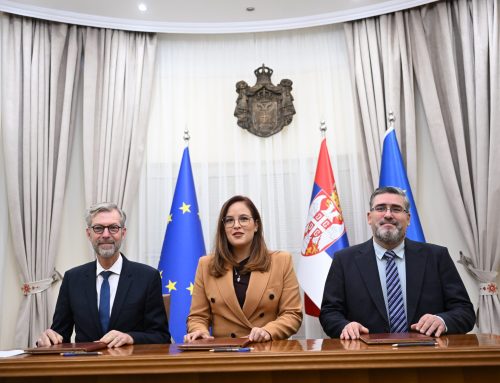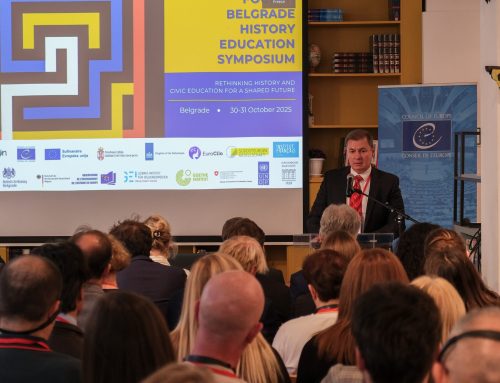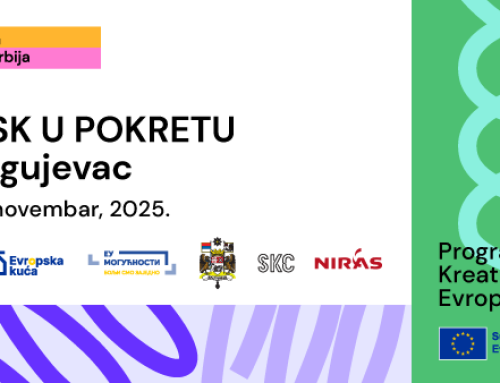Youth and youth issues are underrepresented in traditional media, such as print media and television. When media reports about them, it is usually in a negative context. Young people are most interested in the topics that would enable them to understand the context of social and political events. They mostly trust Internet portals and social networks. These are some of the conclusions of two recently published reports dealing with the relationship between the media and youth in Serbia.
The report entitled “Youth in the Media Mirror”, published by the Serbian Youth Umbrella Organization (Serbian: KOMS), now traditionally analyses the way the media writes about young people, the topics related to young people, as well as the presence of young people in media outlets. The report refers to the year 2021, and it shows a jump in the number of media outlets about young people compared to 2007. Their number has almost doubled in this period.
However, the increased presence of young people in the media is not necessarily positive news. Analysing the content of these outlets, almost half of them (46%) put young people in a negative context. These are mostly outlets from the black chronicle. One third of the outlets have a neutral attitude, while only 16 percent of the media outlets about young people presents them in a positive light.
“Media outlets about young people are rare. It is only when a tragedy involving a young person occurs that the media becomes interested. So, it is not surprising that young people are mostly presented in a negative context,” explains Filip Lukić, a journalist of the younger generation. “Young people are presented in a positive context only to emphasize the contrast to the generally negative narrative and show how good someone is. These are mostly stories about young businessmen,” says Lukić.
According to the results of this research, young people do not have too many opportunities to talk about themselves and their problems. They are mostly talked about by state institutions in 42 percent of the analysed content. Since the majority of outlets are related to negative content, another important group that talks about young people represents relatives, neighbours and eyewitnesses. Young people are only in the third place and they had the opportunity to talk about themselves in 13 percent of the outlets.
And, what is the attitude of young people towards the media? The research conducted by the Belgrade Centre for Human Rights (BCHR) provides us with an insight into a possible answer. The publication, entitled “Youth and the Right to Information in the Digital Space”, was created through the participation of young people from all over Serbia. The report explores the current situation and challenges in the field of exercising the right to inform young people on the Internet, media literacy, fake news, and digital violence, the importance of media literacy in formal and non-formal education.
Višnja Tasić, a psychologist and one of the authors of the report, says that young people are mostly informed through social networks and online portals. “Young people who are socially engaged are very interested in issues of investigative journalism and the fight against fake news,” says Tasić. However, this is not the case with most young people.
One of the topics that stands out and that young people express special interest in is the news that provides a historical context for contemporary political events. Although the increased interest in such content is conditioned by the war in Ukraine, young people express the opinion that more analytical content is needed that would explain the situation in the world, but also that would help in dealing with fake news.
“According to the information available to me, most high school students generally do not check the credibility of the news, nor do they have a habit of doing so. I think that the introduction of media literacy as a subject in schools is not a realistic option, but at least one-time training in the field of media literacy, which would include all schools, would be necessary,” says Tasić.
The European Union has so far supported several projects that encourage the development of media literacy in Serbia, especially among young people. Strengthening the media literacy of citizens is one of the most important segments of the development of society, and it is especially important that this topic is properly represented in the educational system. This is exactly what helps and that is why the Handbook on Media Literacy for Pre-University Education for Teachers and Professional Associates was created. Thanks to the support of the EU project The Support to Media Reforms in Serbia, a handbook was created that will facilitate the work and strengthen the capacities of educators, teachers and professional associates for improving media literacy among school-age children.




